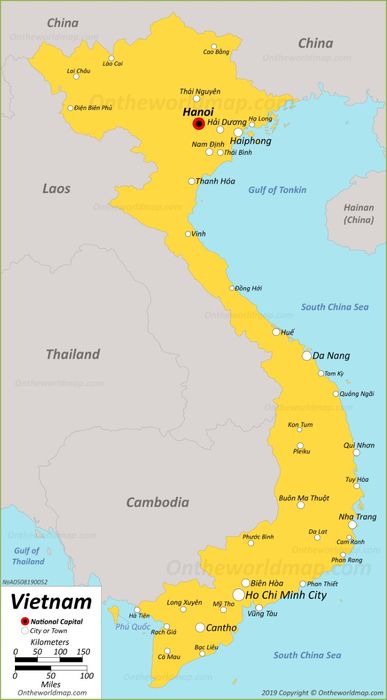
Charles R. Goulding and Preeti Sulibhavi look at the coronavirus situation in Vietnam and how it has affected supply chains.
Vietnam has become an important source of products for many global industry supply chains. China’s increasing encroachment in Hong Kong and Taiwan makes Vietnam more desirable. This includes many industries with expanding 3D expertise and technologies, including footwear giants such as Nike, Puma and Adidas. Another notable company with operations in Vietnam is Samsung.
The resurgence of COVID-19 in Vietnam is causing many multinationals to halt or reduce Vietnam production and seek out alternative country supply chains. Only 1 percent of the almost 100 million population has been fully vaccinated. The Vietnam Textile and Apparel Association recently said that more than 30 percent of the nation’s textile and garment production had to be closed.
“With all the provinces in Vietnam being hit by Covid, the situation is so unprecedentedly uncertain that buyers have to adopt a plan B or C, including offshoring production to another country,” said Vu Ngoc Khiem of Global Sources, an e-commerce platform that links Asian suppliers with overseas buyers.

In Ho Chi Minh City, appliance factories have been operating at 50 percent capacity. In a recent Fabbaloo article, we described Whirlpool’s extensive 3D printing experience and how the immediate replacement of repair parts is critical to the appliance industry. The Biden administration’s deregulation of the third-party repair sector is going to make the appliance repair industry much more competitive. Bicycle manufacturing is another industry that is strong in Vietnam. We recently authored a Fabbaloo article on a leading Vietnamese bike manufacturer.
The Research & Development Tax Credit
The now permanent Research and Development (R&D) Tax Credit is available for companies and startups developing new or improved products, processes and/or software.
3D printing can help boost a company’s R&D Tax Credits. Wages for technical employees creating, testing and revising 3D printed prototypes can be included as a percentage of eligible time spent for the R&D Tax Credit. Similarly, when used as a method of improving a process, time spent integrating 3D printing hardware and software counts as an eligible activity. Lastly, when used for modeling and preproduction, the costs of filaments consumed during the development process may also be recovered.
Whether it is used for creating and testing prototypes or for final production, 3D printing is a great indicator that R&D Credit eligible activities are taking place. Companies implementing this technology at any point should consider taking advantage of R&D Tax Credits.
Conclusion
There are several fallouts from the Coronavirus pandemic. One of them is supply chain disruptions in Vietnam. One of the best ways to resolve the issue is to use regional 3D printing and additive manufacturing to fill the gaps.

